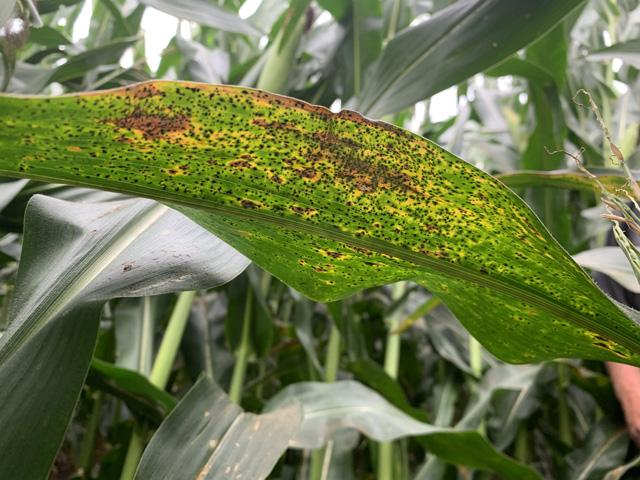Tar Spot, the New Fungus Amongus
Jun 09, 2022

Brandon Hansen
Sales Agronomist, Roland, IA
By now, most of you have heard about a disease called Tar Spot. For us in central Iowa, it’s new, but it is not new to the ag world. Tar Spot is the most important disease to deal with in Latin America. Tar Spot is caused by the fungus Phyllachora maydis and is named for the small raised black spots on the corn leaf surface, sometimes mistaken for fly excrement. If you use your fingernail and scrape the raised black spot, and it doesn’t come off, then it is likely Tar Spot. Tissue samples can be used to properly identify this disease. Reports of this disease can cause a 20 - 60 bushel loss depending on severity.
We can expect that our whole trade area has the inoculum. I have personally seen this disease in the fall of 2020. At the time of harvest, the yield loss was unknown, as this field was in the path of the derecho and the corn was almost a complete loss due to that wind event. The yield loss from this disease is associated with an early, rapid deterioration of the plant. This causes reduced ear size and poor grain fill.
For any disease to affect any plant, three things need to be present: pathogen, host, and environmental conditions. Weather is a key driver for this disease. Environmental factors that favor Tar Spot are prolonged leaf wetness. For example, this could happen if the dew sets in early in the evening and doesn’t burn off until late morning. Studies have shown that 7+ hours of leaf wetness results in higher disease incidence.
Prevention of this disease starts with hybrid selection. Some hybrids are more susceptible than others, but at this point in time, most seed companies don’t have ratings on Tar Spot. These companies will continue to improve their ratings, but for now, an in-crop treatment is the effective way of combating this disease. Work with your local Key Cooperative Agronomist to properly scout for this disease. I would use the weather in the month of June as a guide point. If we are humid and see prolonged periods of leaf wetness, start scouting for this disease. If the disease is present on or before V12, or 6 foot tall corn, an early application of a fungicide may be warranted. Otherwise a VT- R1 application should be sufficient. But as always, consider these before you spray; 1.) Is there a previous history of the disease? 2.) Can you find the disease on the plant? 3.) Will the weather favor disease progression? 4.) Will the yield increase cover the added input costs?
Work with your local Key Cooperative Agronomist to determine if Tar Spot could be a concern in your fields.